Comparing hobby PCB vendors
An not-for-profit roundup of affordable PCB manufacturers. Originally published in 2023 and last updated February 2025.
Over the past two weekends or so, I’ve been cranking out Sir Box-a-Lot handhelds for family and friends. There is no way to make a project like this profitable, but the game is more fun than it might appear — and it’s cool to watch recipients’ faces light up after receiving a homemade gift.
Along the way, I ended up ordering the same printed circuit boards from several hobbyist-friendly vendors. Numerous comparisons of quality and cost for different PCB manufacturers can be found on the internet, but many of them are dated or suspect — so I figured it’s worthwhile to experiment and share my notes.
OSH Park
OSH Park is by far the best-known hobby PCB source in the United States. They do not do in-house manufacturing; instead, they combine multiple small orders into a single panel, send this bulk order to a fabricator, then chop up the panel and ship your boards back to you.
The service is fairly expensive: a single Sir Box-a-Lot PCB (6.5×9 cm) costs about $15 shipped, and you need to order at least three. Rush orders are twice as much; a discounted bulk service brings the price down to $9 a board, but in that case, I’d need to order at least 20 PCBs. It is still cheaper than placing a low-volume order directly with a domestic manufacturer, but it adds a hefty price tag to some projects — and it’s a lot of money down the drain if you mess up the design.
On the flip side, the boards I received from OSH are best described as beautiful. Solder mask is robust and aligned perfectly. Gold-plated (ENIG) pads show no defects. Silkscreen text down to 0.6 mm (the “1” pin marker) is perfectly legible:
Vias appear somewhat larger than specified in my Gerber files; I’d guess 0.5 mm instead of 0.4 mm. They are also minimally off-center — although not enough to cause any practical issues.
The overall appearance of the board is superb, with no dings, scrapes, or other defects in sight. The ordering experience was great too — down to the last-minute ability to upload revised Gerber files if you spot any errors down the line.
Update (February 2025): I used OSH on a couple of other occasions; the quality and the fulfillment experience remains the same as in my original write-up. The following image shows another TQFP-48 close-up on a board I received about a week ago:
DigiKey Red
DigiKey Red is a direct competitor to OSH. The service follows a similar business model of aggregating orders and then shipping them off to a PCB manufacturer; the manufacturer in question appears to be Royal Circuits in Hollister, CA.
The pricing is comparable to OSH: for Sir Box-a-Lot, it amounted to $14 per board with shipping, four boards minimum. In contrast to OSH, the boards are sent to you directly from the fabricator, but the service is actually slower than OSH — perhaps owing to lower order volumes. There is an expedited option costing twice as much, but no discount if you order more boards.
Compared to OSH, the ordering experience is considerably less polished. There are no updates along the way and no customer support to speak of; I tried to get in touch with a live person and had no luck. At some point, a package containing the boards, maybe with some rejects mixed in, will just show up in the mail. Perhaps in two weeks, perhaps a tad more.
Functionally, the quality of the boards is comparable to OSH. Once again, the solder mask is flawless, and so are the ENIG-finished pads. Vias appear even larger than on the OSH board — perhaps 0.6 mm instead of 0.4 mm? — but they are better centered, so I think I can let that slide.
Silkscreen is another matter. The text looks OK, but areas with long straight lines turned out to be a mess:
The cleanliness of the boards also left something to be desired: each and every one was covered in adhesive gunk, possibly from double-sided tape used for fixturing. Nothing here is a showstopper — but overall, I found the experience to be disappointing for the price.
JLCPCB
JLCPCB is a Shenzhen-based manufacturer that caters directly to hobbyists — something too icky for the tastes of its US counterparts. The JLC model has two advantages. First, they offer a wide variety of process choices, whereas DKR and OSH are one-size-fits-all. Just as importantly, in-house manufacturing is faster than shipping boards back and forth: I ordered from JLC a couple of times, and every time, I received the boards within 7 days.
JLCPCB is remarkably inexpensive: a single Sir Box-a-Lot board costs about $1.50 to $2.00 shipped to your door if you order fifteen or so. And for the price, the quality is excellent, even if it doesn’t quite match OSH Park or DigiKey Red.
Here’s a close-up of a JLC board, showing well-aligned true-to-spec vias and HASL-finished pads with a tiny bit of JLC-added solder mask setback. The silkscreen is competent, but loses legibility below 1 mm:
Compared to the other two vendors, JLC solder mask layer is thinner and more fragile, and it’s the weakest aspect of the boards. It can be scraped off fairly easily and will come off if you keep reworking the same pad; in fact, one or two boards came with small scrapes from the factory. The mask still does what it’s supposed to do, but if you’re designing a device meant to be used without an enclosure, you should expect the mask to quickly acquire some wear and tear. Conformal coating might help.
My board design had a couple of mechanical holes with zero-clearance annular copper rings. As seen above, JLC added setbacks on the annular rings, leaving little metal in place; both DKR and OSH plated the holes instead. It doesn’t matter in this particular case, but it’s a good reminder to avoid ambiguity in one’s designs.
Update (February 2025): I keep using JLC for assorted projects; the quality of their PCBs remains consistent, and so is the overall ordering experience. This TQFP-48 close-up shows that the legibility of silkscreen might have improved slightly, and that solder mask setbacks seem slightly larger than before:
PCBWay
China-based vendors are plentiful, but few come close to JLCPCB in terms of speed, pricing, and consistent quality. A noteworthy contender is PCBWay. The company offers some added manufacturing capabilities — such as blind vias and buried passive components — but they charge a bit more and can take a bit longer to ship the merchandise; for a small Sir Box-a-Lot order, courier shipping would have resulted in a total of about $3-$4 per board.
I did not order the same layout from them, but a bit later, I gave them a try with a revised design featuring an SSOP-28 chip with 0.65 mm lead pitch. Here’s the result:
My overall impressions are positive. Silkscreen quality is about the same as with JLCPCB: not exceptional but perfectly adequate. The cosmetic appearance is excellent and consistent across all boards, with no scratches, dings, or dirt. The only real negative is that solder mask alignment is noticeably worse than for other vendors, with a fairly pronounced horizontal offset seen around the IC pads. On the flip side, the mask is considerably thicker than for JLCPCB — to the point of completely plugging some of the vias — so it is likely to take more abuse. Both Chinese vendors manufactured all vias true-to-spec and centered them well.
To their credit, PCBWay was the only company to contact me and ask what I wanted to do with the badly-specified non-plated through holes in my design; as discussed earlier, other shops made that decision on my behalf, with unpredictable results.
Perhaps of note: after I placed my order, PCBWay did a bit of sleuthing and then contacted me asking if I’d like to to get free prototyping in exchange for “slight promotion” on my blog. I did not take them up on that offer, but I imagine that many others would — and there can be some resulting bias in the reviews you see elsewhere.
Other choices in the US and abroad
In the States, your options are limited: although you can work directly with a manufacturer, you should expect to pay $350 or so for a couple of boards — or in excess of $1,000 if you need the PCBs soon.
There is a handful of other choices in allied countries, and on that front, Germany-based Aisler is of special note. Their pricing is higher than for China-based manufacturers, but the company still charges a lot less than OSH Park and DigiKey Red. The quote for twenty Sir Box-a-lot boards came out to $4.50 a piece.
I did not include them in my initial roundup, but I placed an order with Aisler in September 2023 for a slightly different board. Compared to the earlier samples, the most significant difference is the use of copper fill zones in between the traces. I should have cleaned up some of the unconnected copper islands visible in this photo, but bear with me for now:
The package arrived at my doorstep in around 20 days; it traveled via DHL from the factory to the airport in Germany, but then continued via USPS at a snail’s pace all the way from New York to the Pacific Northwest. Both JLC and PCBWay also use DHL, but they pay for the company to deliver in the US. This results in much shorter transit times for a comparable price.
When I opened up the envelope, the most noticeable difference was a distinctive, muddy-green solder mask with copper partly showing through and imparting a brownish hue here and there. This is OK for utilitarian PCBs installed in opaque enclosures, but falls short of the attractive, bright colors used by all the other companies covered in this article. The mask appeared thick, but in an unscientific “poke it with a hot soldering iron” test, it felt less scratch-resistant than the boards from OSH Park.
On most other fronts, the quality appeared to be roughly halfway between the Chinese vendors and the US-based ones. Silkscreen was solid, but not as crisp as for the first two companies covered here. Solder mask alignment near the LQFP-64 pads was very slightly off to the right — although not nearly as much as in the case of PCBWay. Via sizes appeared true to spec, but the holes were vertically off-center by a good amount.
Overall, I think that Aisler is a solid compromise choice if you don’t want to patronize the Chinese regime. If the company improves their shipping options to the US, I can see myself doing more business with them down the line.
👉 For advice on designing your own PCBs, click here. A primer on setting up an electronics workshop can be found here. For a catalog of other electronics-related articles on this blog, visit this page.
I write well-researched, original articles about geek culture, electronic circuit design, algorithms, and more. This day and age, it’s increasingly difficult to reach willing readers via social media and search. If you like the content, please subscribe!

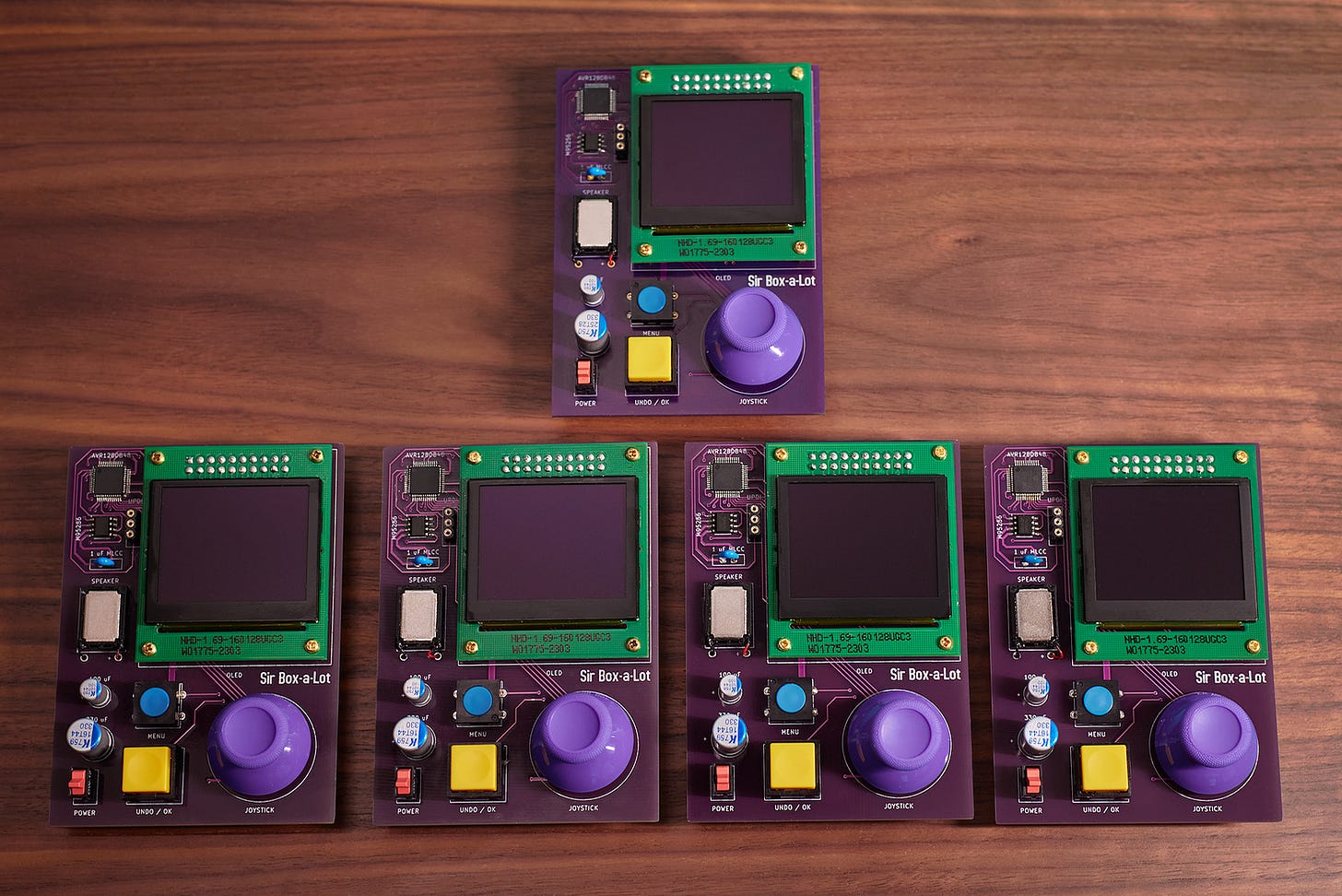
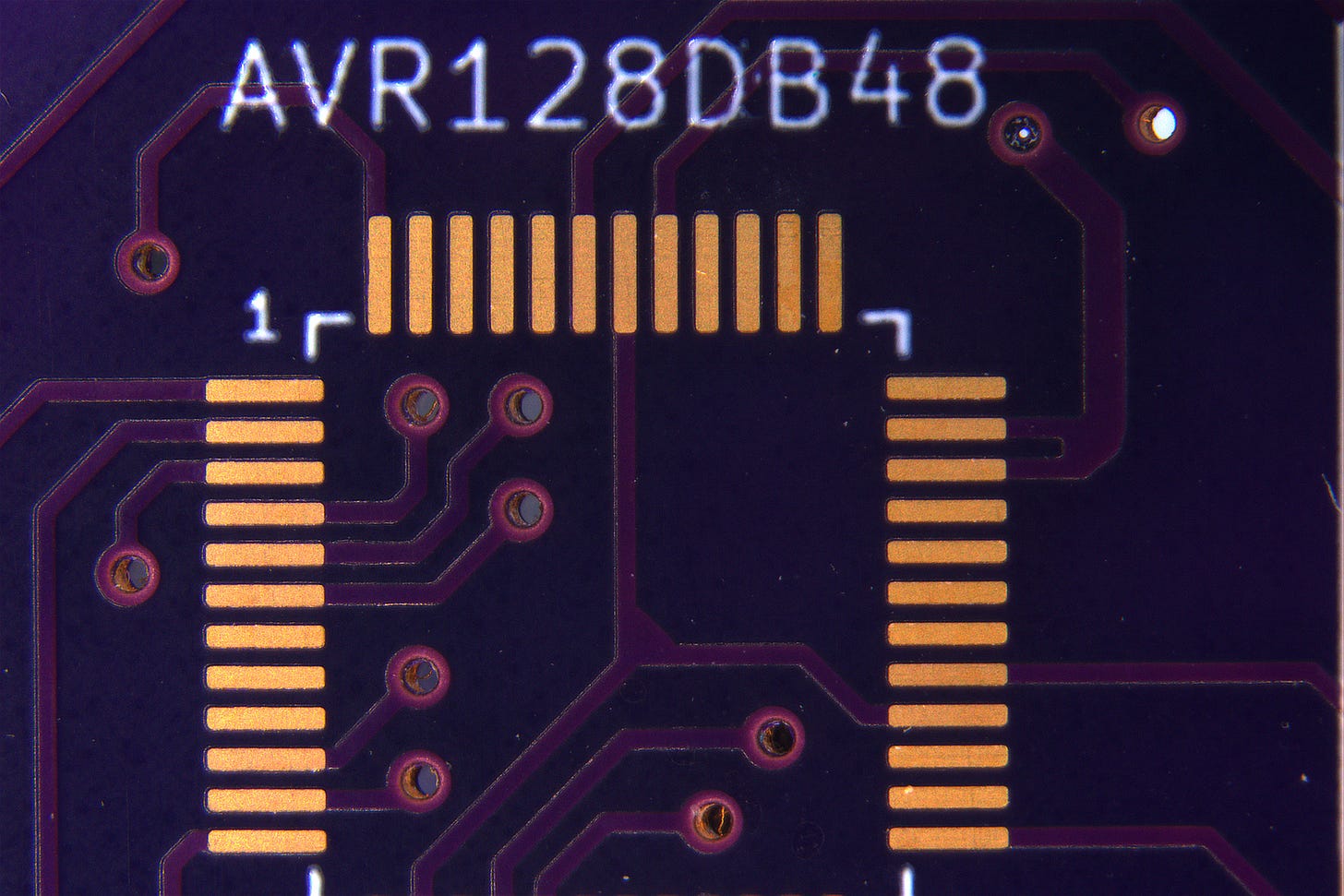
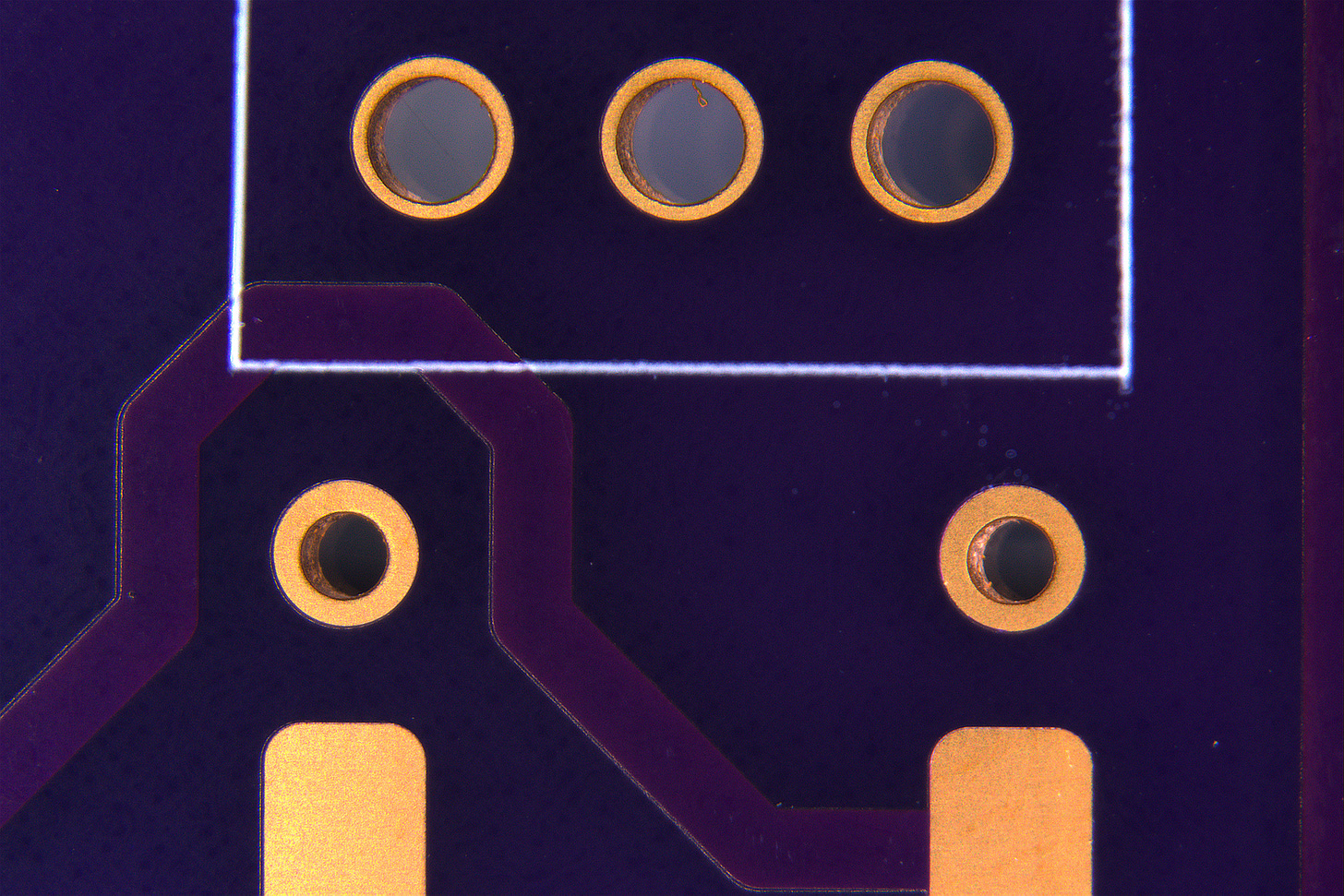
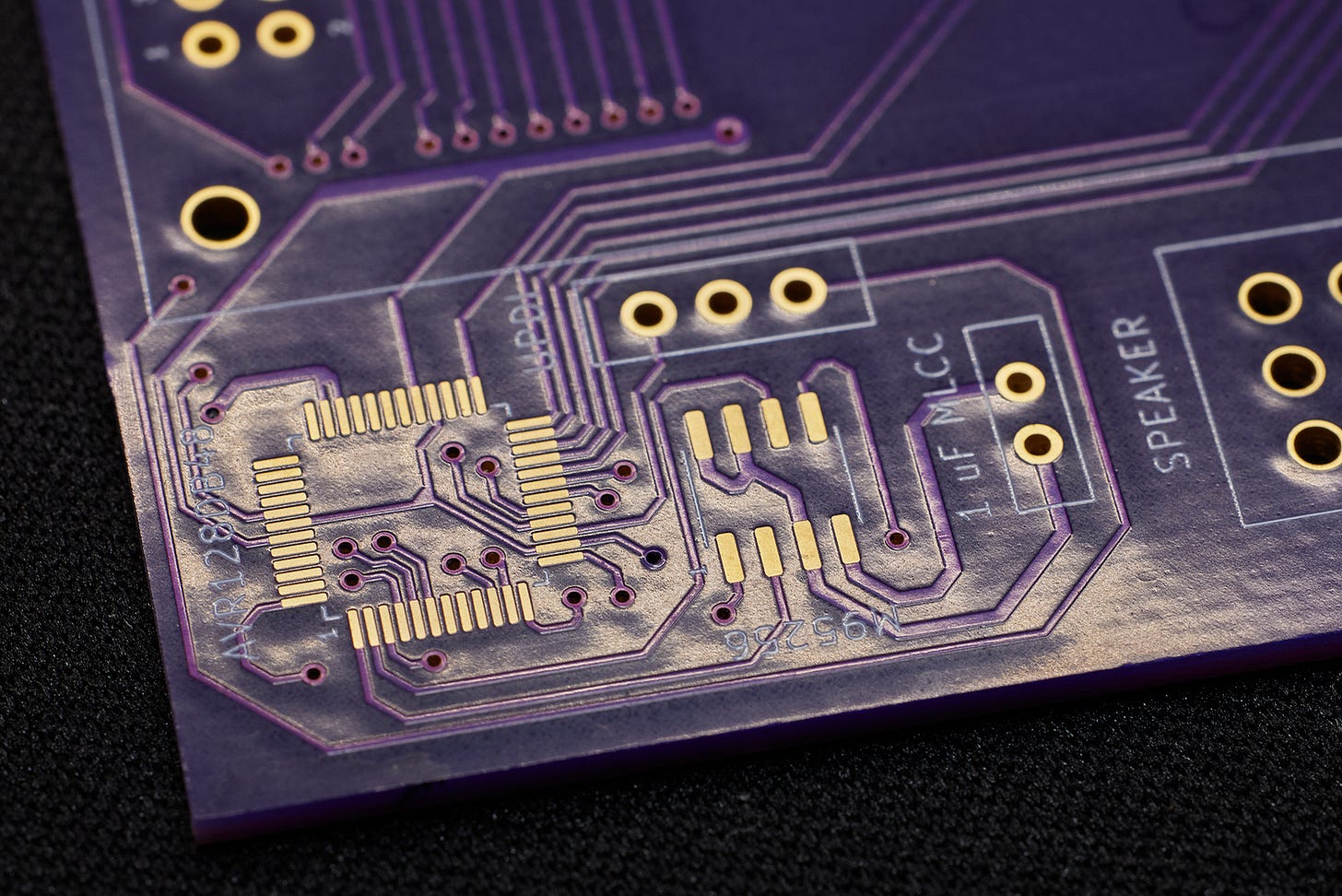
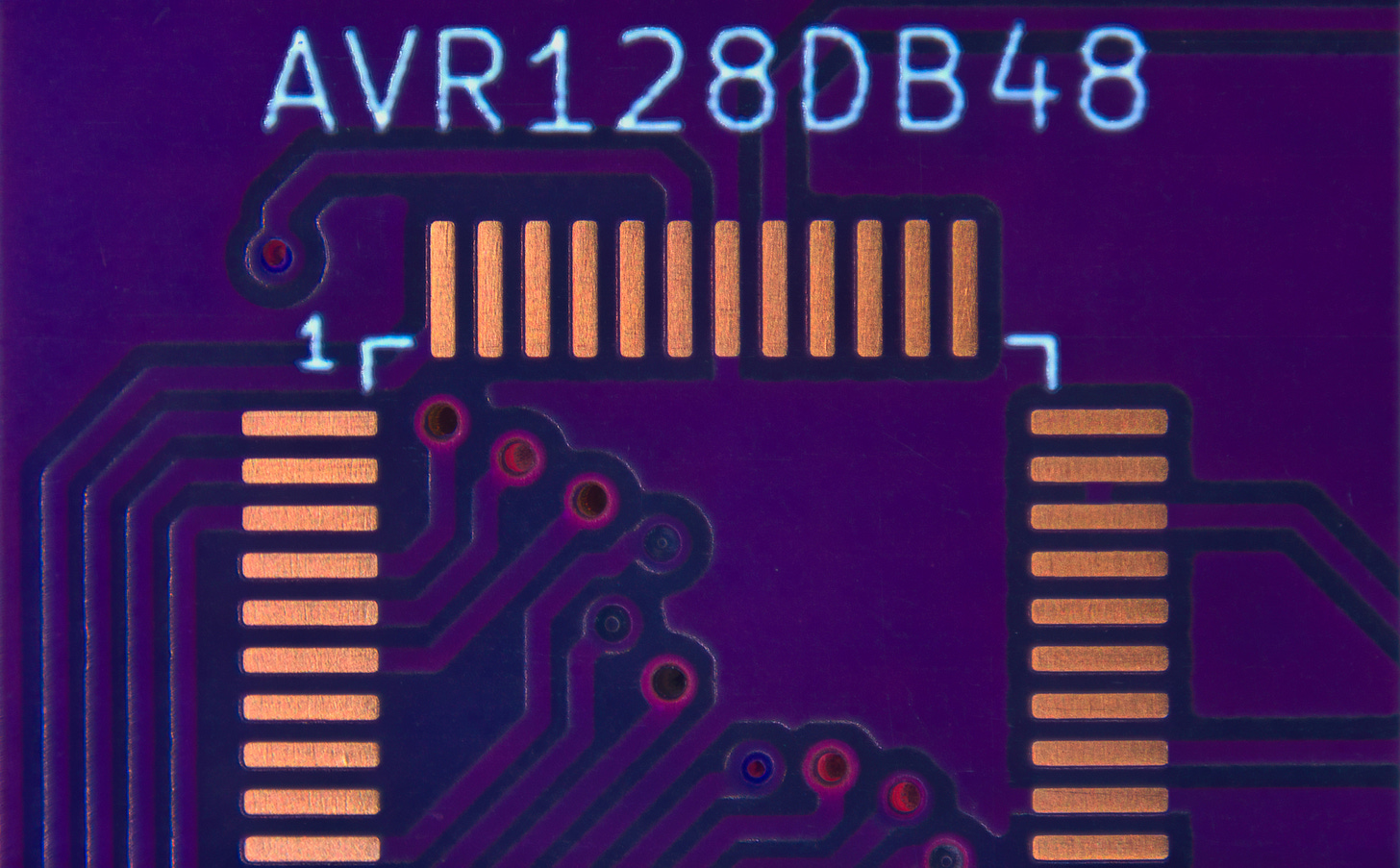
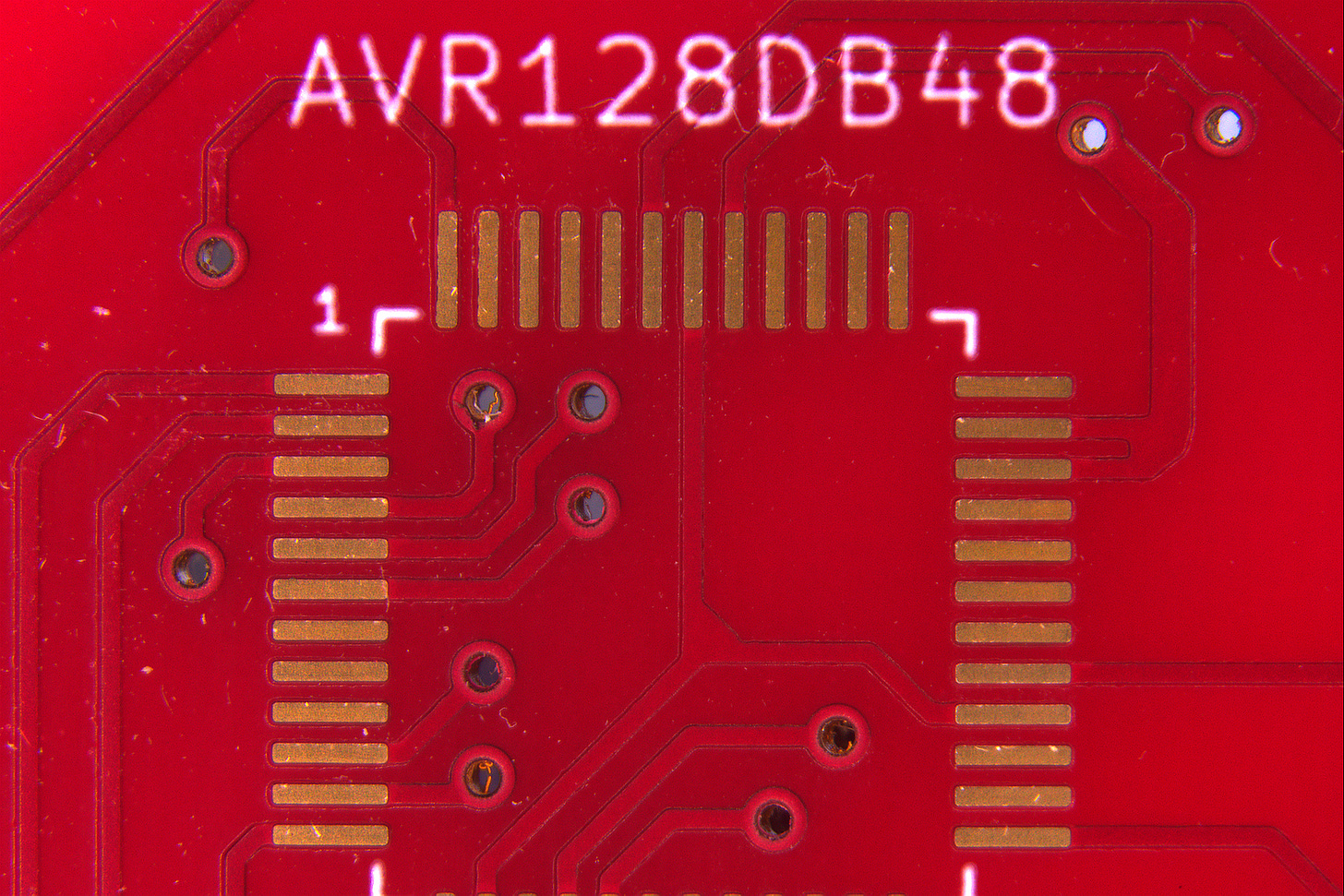

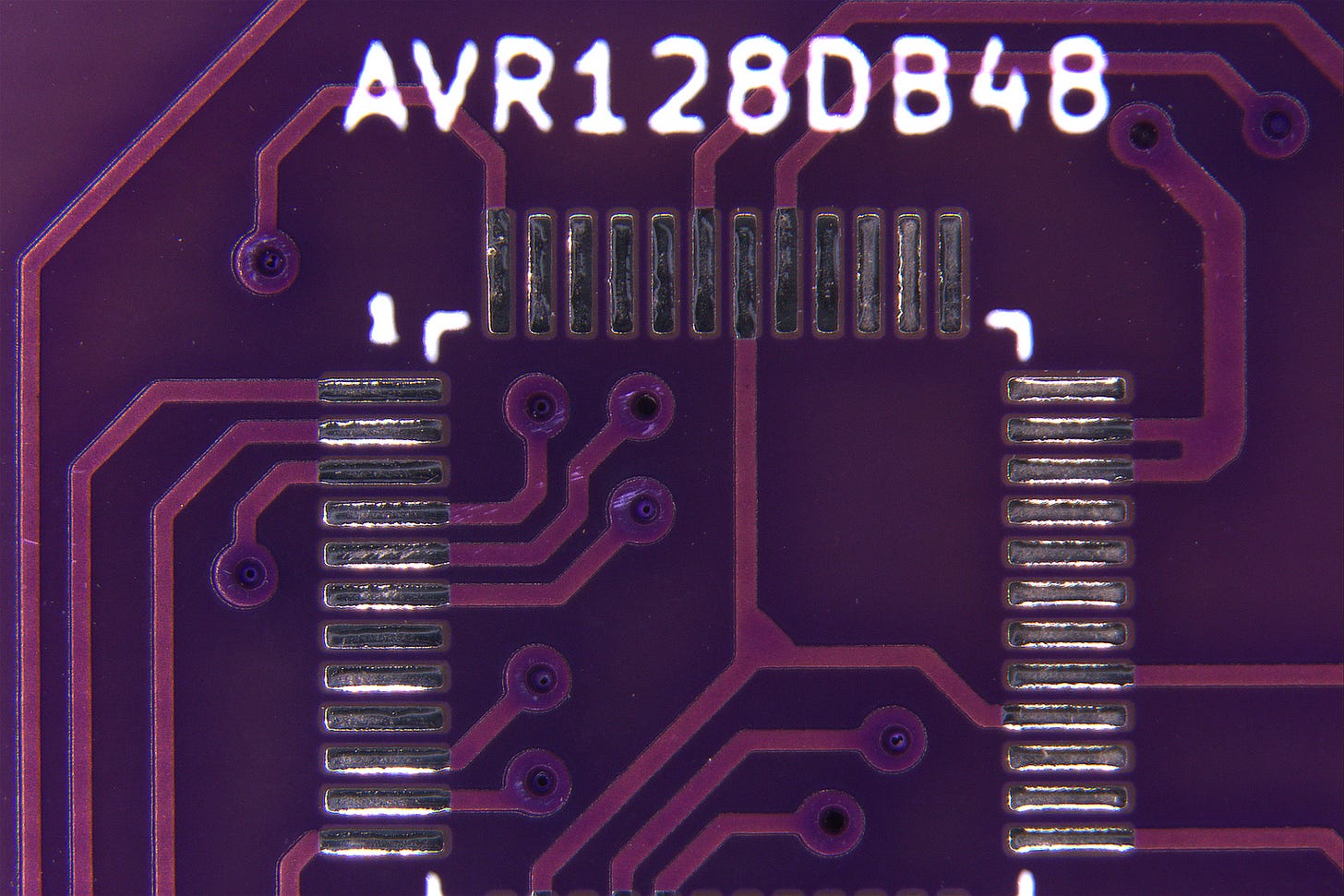
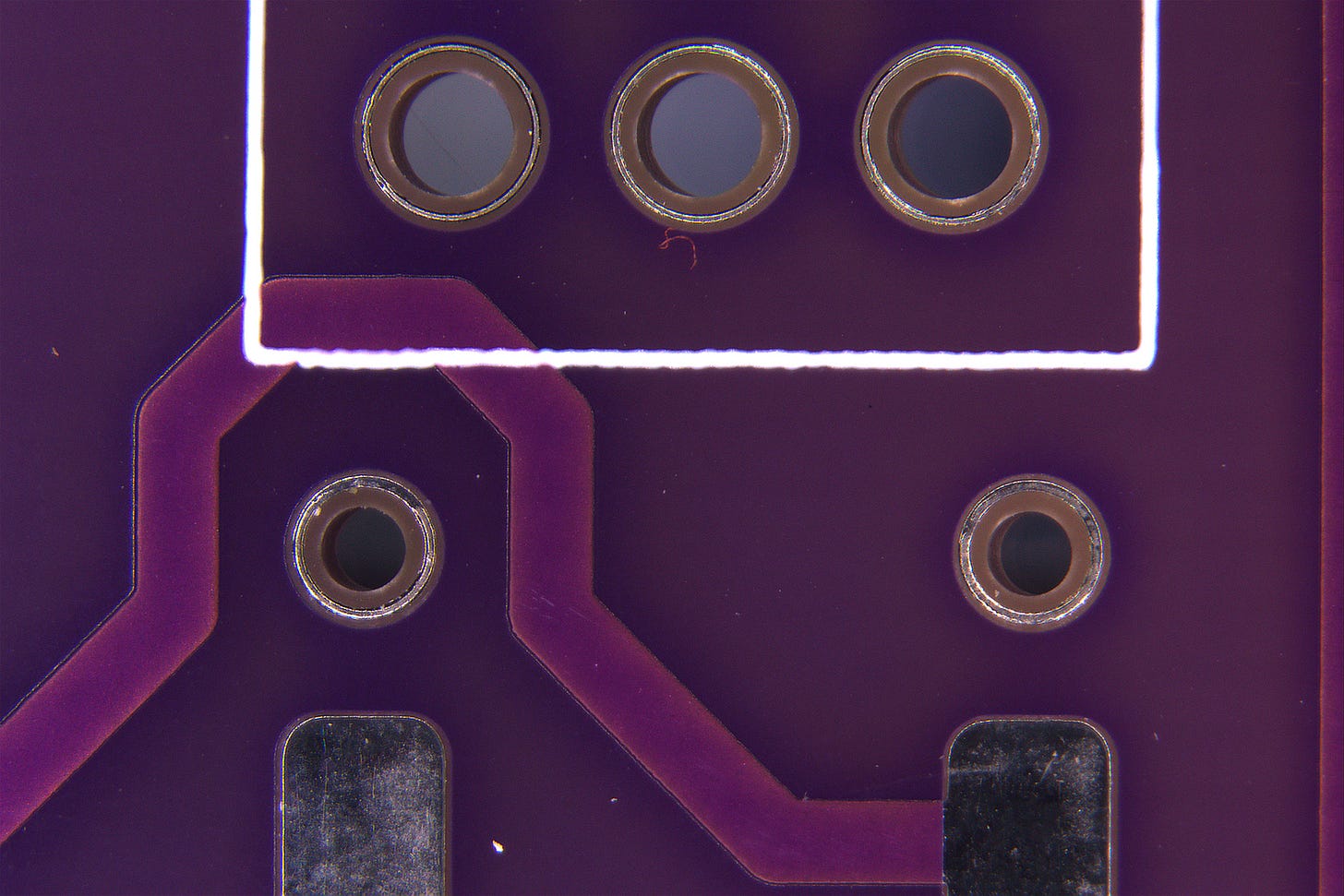
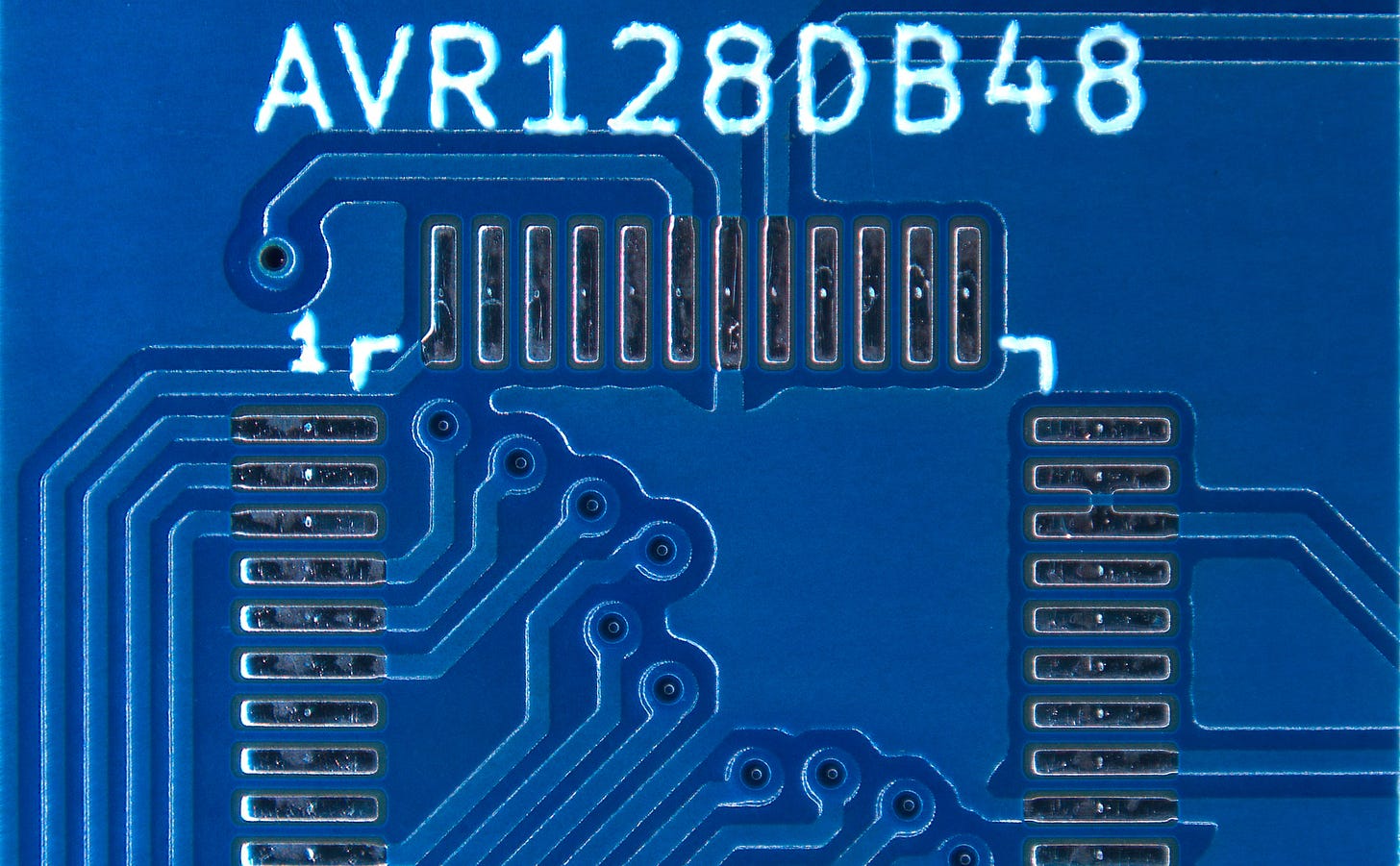

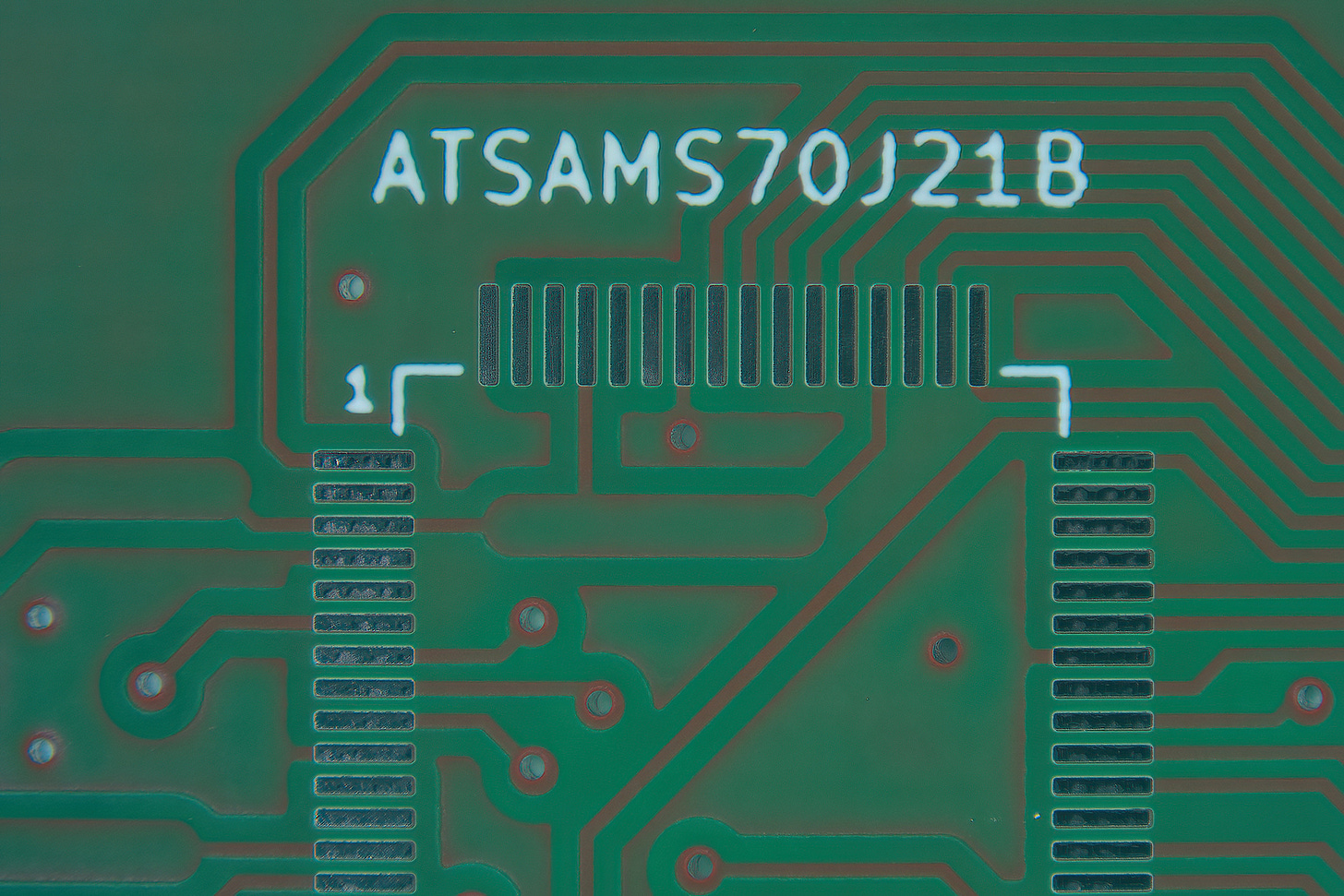
I know it's not related to quality, capability or speed of production... but one really impressive thing I like about OshPark is that they have a method to share your PCB project, so it can be leveraged be others. I often find an oshpark link in the Github project or similar open hardware development communities. This ability to share and re-use hardware designs is pretty important for the open source hardware community, the maker space communities, and other places where "share and share-alike" is a goal.
(Don't worry, the public sharing of your project in OshPark has to be enabled per project, and is off by default, so you don't automatically expose your work. You would have to intentionally share it.)
Nice comparaison but not apple to apple....
Comparing ENIG from each would be nice.
And some like JLC offer several substrates like Fr TG140-155-170. That makes a large difference as they are made in different factories with different tolerances.
As for communication, I have a had good experience with JLC myself.
I will look at Eurocircuits next :-)